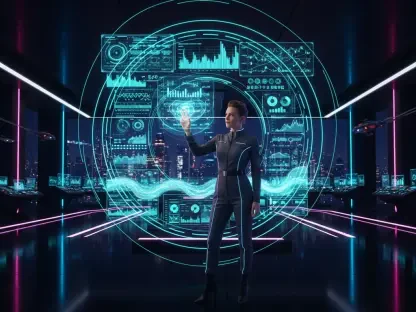In the evolving landscape of online retail, the issue of fake reviews has become a prominent concern, eroding consumer trust and posing significant challenges for both buyers and sellers. These deceptive reviews, whether fabricated to unjustly inflate a product’s reputation or devised to damage a competitor’s standing, have a profound effect on e-commerce. The increasing reliance on consumer reviews to guide purchasing decisions accentuates the impact of these fraudulent practices. As traditional text-based analysis methods prove insufficient in completely addressing this problem, the integration of advanced technologies such as computer vision offers promising solutions. This article explores the critical role computer vision plays in enhancing the detection and prevention of fake reviews, ensuring a more transparent and trustworthy online shopping environment.
The Dangers of Fake Reviews
Fake reviews are crafted with the intent to mislead consumers and sabotage competitors, causing significant harm to the e-commerce ecosystem. Positive fake reviews can undeservedly boost sales, creating a false perception of a product’s quality and reliability. Conversely, negative fake reviews can tarnish a brand’s reputation, leading to decreased revenue and eroded consumer trust. For consumers, the ramifications include wasted money, poor experiences, and a diminished sense of trust in online reviews. Retailers face not only lost customer loyalty but also potential legal consequences as a result of these deceptive practices. Research by Harvard Business School highlights the financial implications, revealing that a single fake positive review can increase sales by 13%, while a fake negative review can lead to a 20% reduction in revenue.
The wide-reaching effects of fake reviews underscore the pressing need for effective detection measures. With a large proportion of online shoppers relying on reviews as much as personal recommendations, ensuring the authenticity of these reviews is paramount. A study by the European Commission indicates that one in five reviews online is suspected to be fake, emphasizing the urgency of developing more sophisticated and reliable detection methods. The authenticity of consumer feedback is essential for maintaining trust in the online marketplace, and innovative approaches are necessary to combat this growing issue.
Shortcomings of Text-Based Analysis
Traditionally, retailers have relied on Natural Language Processing (NLP) tools to combat fake reviews, focusing on the textual content to identify patterns indicative of deception. These NLP tools are designed to detect repetitive phrases, unusual timing of reviews, and unnatural sentence structures. While these methods can be effective in some cases, the increasing sophistication of fake reviewers, who often employ advanced AI tools to create more believable texts, has made it challenging for NLP to effectively filter out all fraudulent reviews. The exclusive focus on textual analysis limits its ability to detect more intricate forms of deception, leaving visual cues unaddressed.
The limitations of text-based analysis highlight the need for a more comprehensive approach to fake review detection. By analyzing only the textual elements, NLP overlooks the significant insights that can be garnered from visual data. As fake reviewers become more adept at mimicking authentic human behavior, the shortcomings of NLP in isolation become more apparent. This necessitates the incorporation of additional layers of analysis, such as computer vision, to enhance the detection of deceptive practices and provide a more robust solution.
The Rise of Computer Vision
Computer vision technology offers a significant advancement in the detection of fake reviews by analyzing visual components, such as product images and customer-uploaded photos. Unlike traditional text-based analysis, which focuses solely on the content of written reviews, computer vision evaluates the visual data accompanying those reviews. This approach is essential in identifying discrepancies and patterns that are not evident through text alone. By leveraging the capabilities of computer vision, retailers can gain a deeper understanding of the authenticity of visual content, thereby strengthening their overall detection efforts.
The application of computer vision in fake review detection complements textual analysis, creating a more comprehensive method for identifying fraudulent activities. Visual analysis enables the detection of inconsistencies in product images, differences in quality, and potential manipulations that may indicate deceptive practices. This technology assesses various attributes, such as image dimensions, texture, color accuracy, and object shapes, to identify potential signs of fake reviews. By incorporating these visual elements into the analysis process, retailers can achieve a more reliable and effective approach to maintaining the integrity of online reviews.
Matching Customer Photos to Product Listings
One of the primary applications of computer vision in combating fake reviews is the comparison of customer-uploaded images with official product photos. This process involves analyzing multiple attributes of the images, including dimensions, fabric texture, color accuracy, and logo placements, to identify any discrepancies that may indicate fraud. For instance, a high-quality product advertised in the listing may appear noticeably different in fake reviews, with customer-uploaded images showing lower quality, faded, or misrepresented items. Computer vision tools excel in detecting these inconsistencies, often outperforming human detection capabilities.
The sophistication of computer vision models enables the identification of subtle differences that might be overlooked by the human eye. Advanced similarity models assess a range of visual parameters to ensure that the customer-uploaded photos match the advertised product descriptions. This rigorous comparison helps to flag reviews that include images inconsistent with the product, indicating potential deception. By leveraging these powerful tools, retailers can enhance their ability to detect and eliminate fake reviews, thereby protecting the integrity of their products and the trust of their customers.
Detecting Image Reuse Across Multiple Listings
Another effective use of computer vision in this realm is detecting the reuse of images across multiple product listings. Fake reviewers frequently use the same photos across different listings, a practice that can be indicative of bots, fake profiles, or incentivized reviews. Computer vision technology tracks the fingerprints of images, allowing for the identification of those that appear repeatedly across unrelated products. This feature helps to uncover patterns of deceptive behavior, providing an additional layer of scrutiny beyond text-based analysis.
The ability of computer vision to recognize and flag reused images is crucial for maintaining the authenticity of online reviews. By tracking the use of identical photos across diverse listings, retailers can identify potentially fraudulent activity and take appropriate action to address it. This capability is particularly valuable in the detection of systematic fake review campaigns, where the same visuals are spread across numerous product pages to manipulate consumer perceptions. Incorporating image reuse detection into the overall review analysis process significantly enhances the reliability of identifying fake reviews and maintaining a trustworthy online shopping environment.
Analyzing Reviewer Behavior Through Visual Uploads
The behavior of reviewers, particularly in their visual uploads, also serves as a key indicator of potential fake reviews. Patterns such as uploading a large number of photos in a short span or covering disparate and unrelated items can signal suspicious activity. Computer vision combines image tracking with behavioral analysis, utilizing time-based anomaly detection to uncover these patterns. By examining the timing and volume of visual uploads, this technology can identify behaviors consistent with fake review activity, such as mass uploads of staged photos by a single profile.
The integration of behavioral analysis with visual data provides a multidimensional approach to detecting fake reviews. By monitoring the frequency and timing of photo uploads, as well as the diversity of reviewed products, computer vision can flag unusual behaviors that warrant further investigation. This comprehensive scrutiny helps in distinguishing genuine customer feedback from orchestrated fake reviews, ensuring that the reviews present on retail platforms are credible and trustworthy. Enhancing reviewer analysis through visual and behavioral patterns contributes significantly to the overall effectiveness of combating fake reviews in the online retail space.
Future Implications for Retail Trust
As artificial intelligence and computer vision technologies continue to advance, their integration into the e-commerce industry holds promise for significantly enhancing consumer trust. Future developments in these fields are expected to lead to systems capable of automatically flagging suspicious listings and alerting sellers to inconsistencies. Innovations such as the introduction of “Verified Visual Match” badges could further contribute to transparency and honesty, offering assured validation that product images and descriptions align with actual customer experiences.
The proliferation of these technologies will likely result in enhanced automated detection processes, reducing the reliance on manual review moderation and increasing efficiency in identifying fake reviews. As retailers adopt these advanced systems, customers will benefit from a higher degree of confidence in the authenticity of reviews, leading to more informed purchasing decisions. The potential for integration with other AI-driven tools, such as sentiment analysis and behavioral tracking, also opens new avenues for comprehensive fraud detection and prevention strategies.
Conclusion: The Critical Role of Computer Vision
Fake reviews are designed to deceive consumers and undermine competitors, wreaking havoc on the e-commerce ecosystem. These dishonest reviews can either falsely elevate a product’s image, driving up undeserved sales, or they can damage a brand’s reputation, leading to a loss of revenue and customer trust. Consumers affected by fake reviews end up wasting money and enduring subpar experiences, which erodes their confidence in online reviews. Retailers not only lose customer loyalty but may also face legal repercussions for engaging in these deceptive practices. A study by Harvard Business School reveals that a single fake positive review can boost sales by 13%, while a fake negative review can slash revenue by 20%.
The widespread impact of fake reviews highlights the urgent need for advanced detection methods. With many online shoppers trusting reviews as much as personal advice, ensuring their authenticity is crucial. According to the European Commission, one in five online reviews is suspected to be fake, stressing the importance of developing sophisticated detection techniques. Authentic consumer feedback is vital for maintaining trust in the online marketplace, making it essential to adopt innovative strategies to tackle this growing problem.









